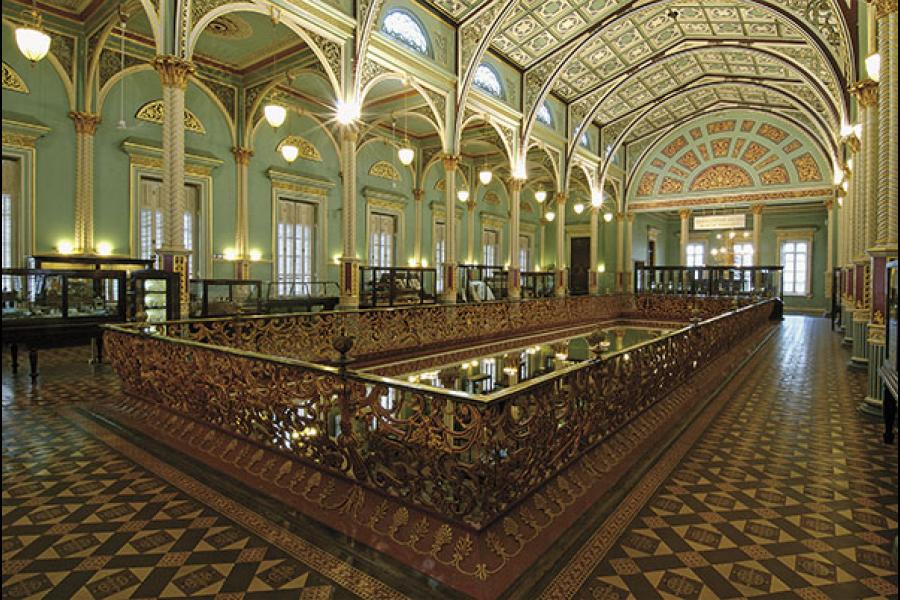
Museums that house Indian art
For such a vast country, there are just a handful of museums where one can view modern and contemporary art
India has several museums, some excellent, others less so, but few of them are associated with art apart from miniature paintings. As modern and contemporary art becomes representative of the culture of recent centuries, it is time we looked around at the spaces that future generations will view us by. Spread between public and private institutions, represented here are some of those with diverse collections and interactive programmes of art. With the state allocating its priorities to development, private players will increasingly play a significant role via endowments, foundations, or, indeed, private museums, the first of which we have begun to glimpse over the past decade.
Once Upon a Time
BHAU DAJI LAD MUMBAI CITY MUSEUM
Mumbai
The eponomously named Victoria and Albert Museum opened in 1872 with the help of city grandees who wanted a place for Bombay’s fine and decorative arts to be preserved. Ethnographic by its nature, it served as a reference for the different communities of the presidency showcased through books, photographs, maps, lithographs and dioramas. Post-independence, the museum went into genteel decline from which it was arrested with INTACH, the Municipal Corporation of Greater Bombay and the Jamnalal Bajaj Foundation stepping in with an ambitious five-year restoration project. Reopened in 2008 to the public, it was renamed in honour of a city physician and antiquarian. Located next to Byculla Zoo, the museum records a high footfall and has become one of the most interactive spaces in the city, thanks to its director’s focus on high quality exhibitions by artists AtulDodiya, L N Tallur, Reena Saini-Kallat, Sheba Chachi, Ranjani Shettiar, Sudarshan Shetty and Thukral and Tagra, among others. It has also partnered with international art institutions such as the Solomon R Guggenheim Museum, the Museum of Modern Art, and – no surprises here – the Victoria and Albert Museum, London. The original building with its patterned floors and carved pillars is as much the attraction of this jewel of a museum as the open area that separates it from the air-conditioned galleries where temporary exhibitions of art are held.
An Endowment Worth its Name
JEHANGIR NICHOLSON GALLERY, CHHATRAPATI SHIVAJI MAHARAJ VASTU SANGHRALAYA
Mumbai
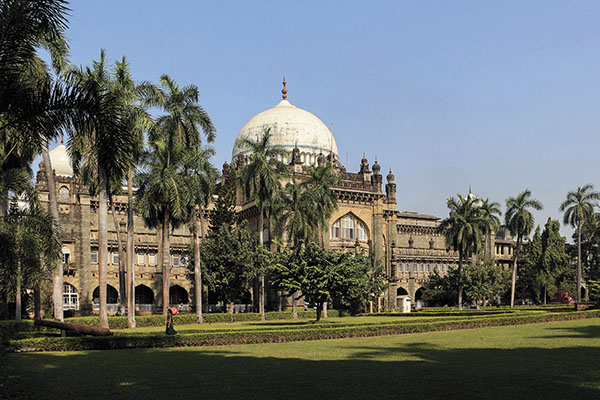
Formerly named Prince of Wales Museum, this 1922 Indo-Saracenic building houses a complete museum for everything from stone and bronze idols to textiles and manuscripts, but it also has among the finest collections of Indian modern art, chiefly from western India, thanks to an endowment from the Jehangir Nicholson Art Foundation. The Jehangir Nicholson Gallery is where visitors can enjoy some of the most stunning instances of modern art collected by a passionate Parsi collector whose first buy in 1968 showed the way to a 800-work collection that he continued to build till his death in 2001. Jehangir Nicholson was among the biggest patrons of the Progressive Artists’ Group, but his collecting was eclectic and includes the names of most 20th century Indian artists, no matter their place of residence, style, or attribution to a collective or place. While part of the Jehangir Nicholson estate has been auctioned to raise funds for the National Centre for Performing Arts, the 15-year loan of art to the museum could possibly show the way for other collectors to share their patronage with an art-loving public.
Making Inroads Into City Neighbourhoods
Mumbai
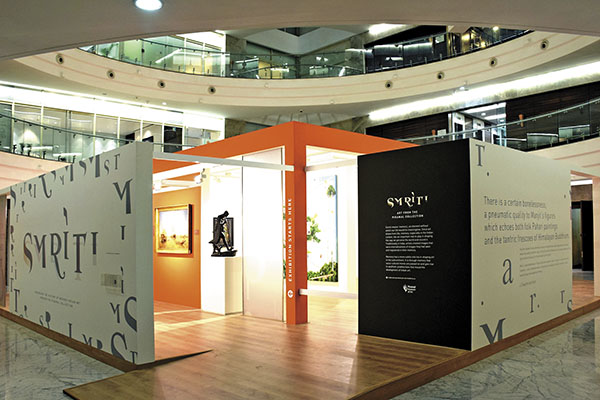
When it opened its doors to the public in November 2015, the Piramal Museum of Art opened for discussion the role that private collectors have as guardians and promoters of art in the city. Mumbai has the privilege of having a large number of collectors with the ambition of opening those collections to the public, but have been hesitating because of a shortage of space and the high cost of real estate. Swati and Ajay Piramal, late collectors in this arena, have broken the mould with their inaugural exhibition, Smriti, at the museum in Lower Parel. The exhibition shows off some of the highlights of their collection, but the Piramal Museum of Art will not restrict itself to just the family collection. Already, a second exhibition has been planned and will consist of 30 Raja Ravi Varma paintings from the Baroda royal family collection. This will be the largest outing of this artist’s work in any city outside the palace, and is bound to garner a lot of interest. Interestingly, while the Piramals plan a number of changing exhibitions at the museum, they are also considering opening more than one museum in the city. Opting for smaller spaces rather than one consolidated place, they hope to involve the city’s public in their own neighbourhoods with smaller branches so that museum going becomes easier and more accessible than it currently is.
The Altar of Modern Art
NATIONAL GALLERY OF MODERN ART
New Delhi
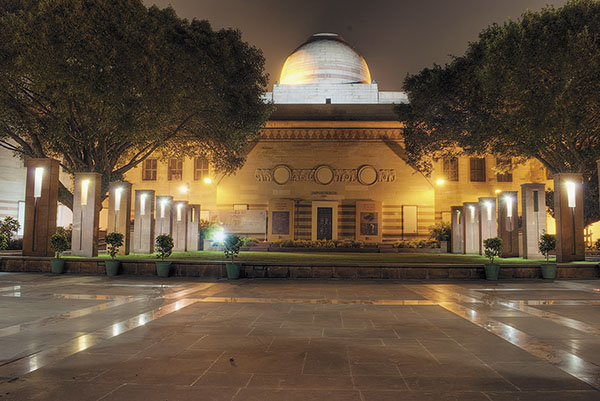
The one altar at which every art-lover must bow is NGMA with its permanent collection providing them with a birds-eye-view from pre-modern to contemporary art. A historic collection, it houses several iconic works that are cited for their lineage and are often published alongside scholarly essays and in books. The large collection of Amrita Sher-Gils, for instance, the equally impressive Jamini Roys, the early and extant works of artists who cut their teeth at Mumbai’s JJ School of Art and Kolkata’s Government School of Art and Craft, award-winning legacies for most Indian artists, and the prestige associated with this institution make it the pre-eminent art institution of the country. Housed in the erstwhile palace of the Maharaja of Jaipur close to India Gate, its new, much-awaited wing was opened in 2009, allowing a larger representation of its collection to be shown at any given time. The stately estate gardens are pierced with sculpture and, currently, installations by Subodh Gupta. The main building is now used for hosting retrospectives of Indian artists, as is another large gallery in the new wing, which doubles as a space to exhibit works by international artists. Some of these exhibitions also travel to the NGMAs in Mumbai and Bangalore, which also feature the permanent collection, but there’s nothing else like the grande dame in New Delhi as a meeting point for the art community.
A Collection Worthy of a Museum
KIRAN NADAR MUSEUM OF ART
Delhi and Noida
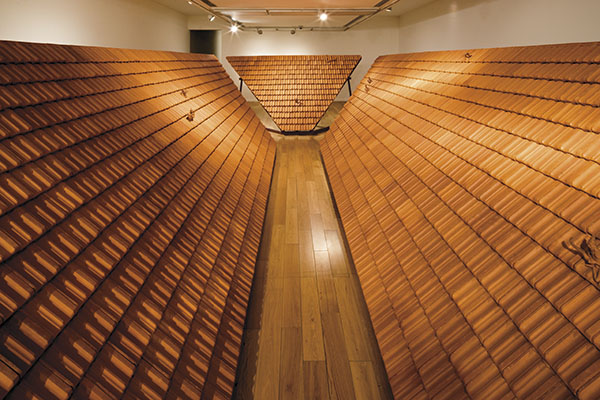
A number of private collectors have opened their collections to the public, but none has been on the scale and professionalism of Kiran Nadar, wife of HCL czar Shiv Nadar, whose collecting grew to such a point that she had to resort to public spaces to hang that art. Ever since the Kiran Nadar Museum of Art opened in Noida, in 2010, that scale has only grown. Today, a second museum exists in New Delhi, inside a mall, where the research team is able to pull off some sensitively curated exhibitions. The promoter has also been scouting for land in the capital where a full-fledged museum will be created to house the growing collection. KNMA is one of few museums in India that supports a rigorous programme in contemporary rather than just modern art. The Noida museum, located within an HCL campus, has done a lot to sensitise colleagues on the cultural significance of art in everyday life. The Delhi galleries have a vigorous outreach programme that reaches out to art students in schools and colleges, and some of their thoughtfully planned exhibitions have done their bit to promote Indian art internationally – among them the previously neglected modernist Nasreen Mohamedi whose retrospective at the museum paved the way for it to travel to the Tate in London, and will, in March, open the new Breur Met of the Metropolitan Museum of Art in New York – a rare honour for any Indian artist.
The Seat of Empire
VICTORIA MEMORIAL
Kolkata
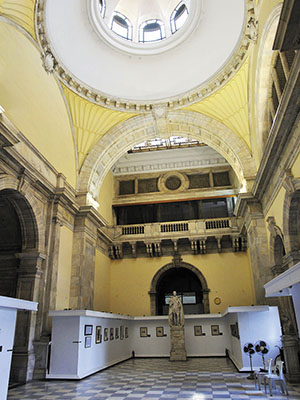
The Salon Started a Trend
RABINDRA BHARATI MUSEUM
Kolkata
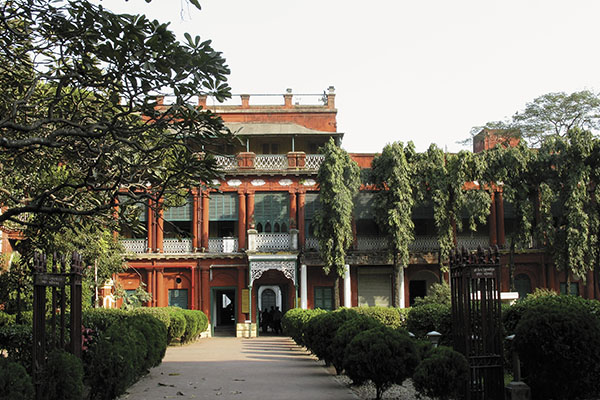
Jorasanko, the mansion of the Tagore family in Kolkata, was one of the most exciting centres of art and culture in the early 20th century, a salon in the true sense of the term. It is here that Rabindranath Tagore wrote his Nobel Prize awarded Gitanjali and Abanindranath Tagore conceived the wash style of water colour painting that would go by the eponymous name of Bengal School. Here, the intellectuals of Calcutta met to talk about theatre and literature, besides art, and here that printmaking was introduced to some of its most active proponents. A storehouse of Tagore memorabilia, for many the reason for a visit is simple – to linger over a collection of paintings by Rabindranath Tagore. Among India’s earliest modernists who veered away from his family-propelled Bengal School, these paintings are a stunning insight into the artist’s mind and are among the earliest expressionist paintings in the country that seem to allow a peep into the mind and soul of both artist and his subject, many of them veering between the fantastic and the macabre. Of course, Jorasanko has examples for many Bengal School artists as well, their delicate colours and stylisation representing a critical period of Indian art history.
Learning and Housing Art
KALA BHAVAN COMPLEX, VISVA-BHARATI
Santiniketan
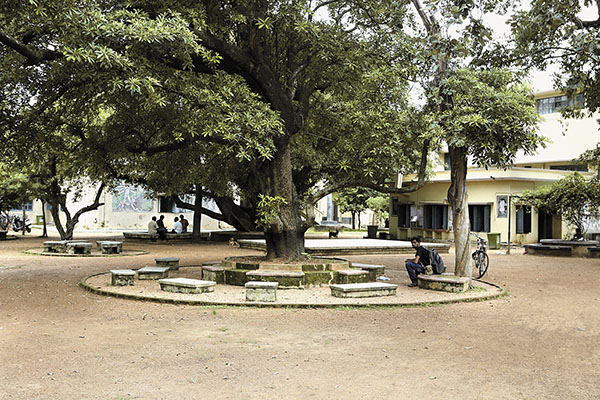
Santiniketan, in West Bengal, is forever associated with Rabindranath Tagore’s university, Visva-Bharati, of which the Kala-Bhavana complex housed the art department, one of its most significant streams. The entire university is rich with memorials to Tagore, who constantly shifted residence and was responsible for many of its unique buildings. It is here one will see sculptures by India’s first modernist sculptor, Ramkinkar Baij, who used cement for making his giant sized Santhal Family and Mill Call sculptures, among others. Tagore was also able to invite Nandalal Bose as principal of Kala-Bhavana, marking a shift in his painting style, which turned expressionistic, as became the preferred Santiniketan style of the time. Here, therefore, one can see Bose’s drawings, murals by BenodeBihari Mukherjee, Baij’s sculptures and the evidence of Tagore himself – most visibly in the classes that are still held under the shade of trees, as in his lifetime.
Built from Scratch
GOVERNMENT MUSEUM AND ART GALLERY
Chandigarh

It is to Dr M S Randhawa’s credit that art from the museum in Lahore formed the catalyst for building one of the most extensive collections of modern and contemporary art within a museum. Though not particularly associated with art, Chandigarh has managed to create a lively art scene, in no small measure thanks to a vibrant Lalit Kala Akademi with regular presentations and discussions by artists and curators. With special sections for three artists – Sir Sobha Singh, who has made seminal portraits of the ten Sikh Gurus, S G Thakar Singh with his realistic figurative works that were a rage among Indian royal families, and Russian artist Nicholas Roerich who spent 19 years in the Himalayas – it has paintings by everyone from M F Husain, Tyeb Mehta and F N Souza to J Swaminathan, Manjit Bawa and Anjolie Ela Menon, among hundreds of others, making it among the few places in the country where such a large diversity of artists can be viewed under one roof. That is also has gallery space for eminent printmakers highlights its commitment to exploring different facets of Indian art that takes into account period, style, movement and genre.
A Home for Ravi Varma
MAHARAJA FATEH SINGH MUSEUM
Vadodara

The former royal houses patterned their model kingdoms on the West and created museums to educate their subjects about the world, some of them exhibiting such curiosities as the Egyptian mummies (Jaipur). Many of them patronised artists to pain mythological and historical scenes in the Western narrative style that was then popular. But it was the royal house of Baroda that commissioned one of India’s groundbreaking artists, Raja Ravi Varma, to paint a number of iconic works. Whether his Lakshmi, or the portraits of the Baroda royal family, especially of the zenana women – including one of a princess posing with her pomeranian – they have been restored and the wing has become one of the most popular art destinations for the aficionado. Beyond the Ravi Varmas and other paintings from this period by both Indian and European artists is the massive collection of objects that Maharaja Sayajirao Gaekwad III collected on his numerous trips outside the country. Housed in the overwhelming Lukshmi Vilas Palace, the Ravi Varmas are reason enough for a trip to this city whose contribution to the world of art is its Faculty of Fine Arts at MS University – one of the major schools and centres of art practice in India.
(This story appears in the Jan-Feb 2016 issue of ForbesLife India. To visit our Archives, click here.)
Post Your Comment
